Don’t you hate it when you spend hours in the kitchen trying to make a cake masterpiece, only to look at it and think, “Why doesn’t my cake look like the picture?”, or “Why can’t I just get this thing to look right?” It’s frustrating…believe me, I know. So, that’s why today I’m talking about common cake decorating problems and how to avoid them.
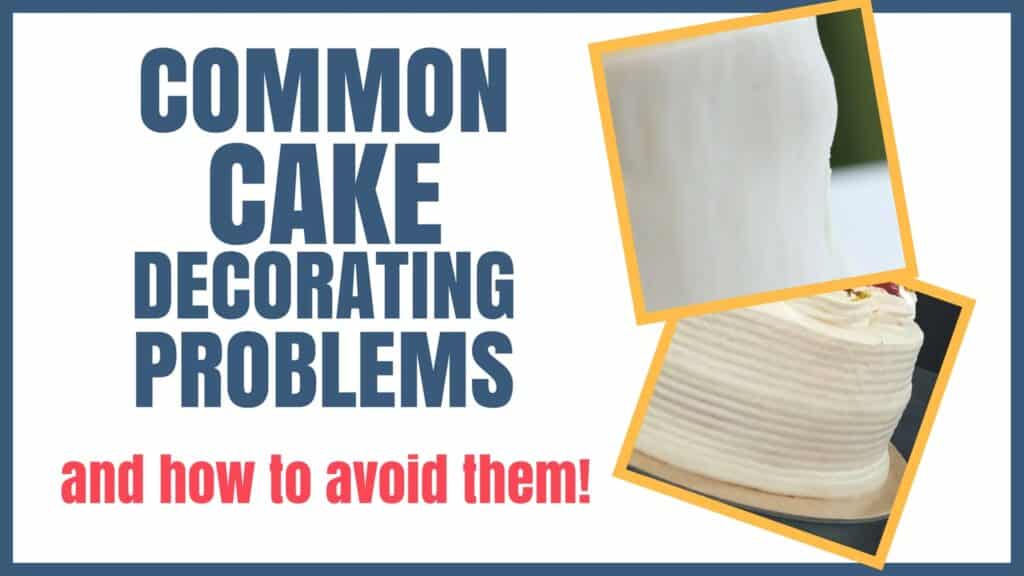
Alright, let’s get to ’em, shall we.
This post contains affiliate links. As an Amazon Associate, I earn from qualifying purchases. You can see my policies linked in the website footer.
Cake Decorating Problem #1:
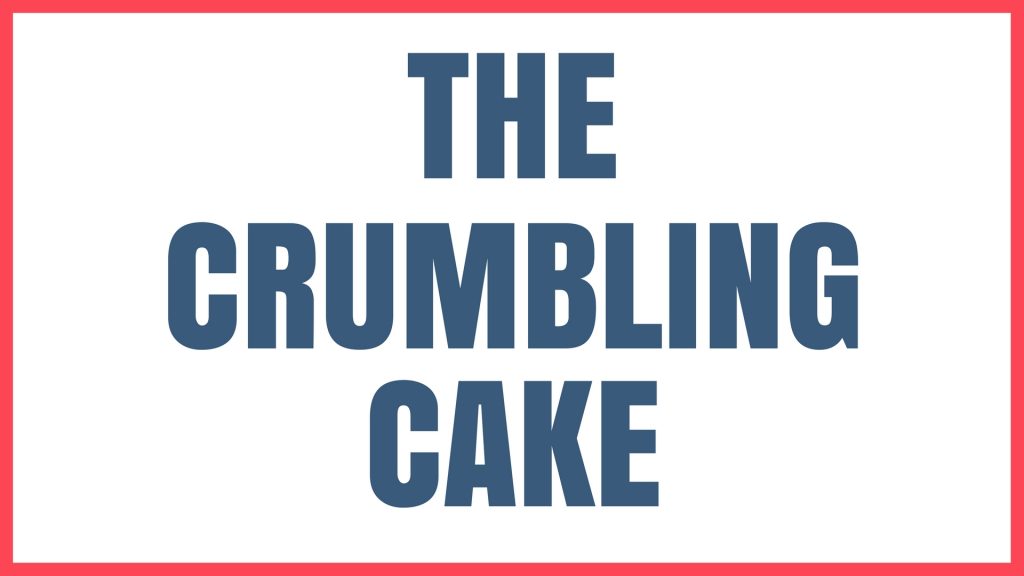
Your cake crumbles on you when you’re icing it.
I think we’ve all pretty much encountered this problem. I’ve found that chocolate cakes are the worst at crumbling and I really don’t know why that is. My theory is that maybe they’re just more moist than other cakes, but I can’t really confirm that.
How to Avoid It:
There are a couple of solutions to this problem. Pick one of these to try, or do a combination of both depending on how crumbly your cake is.
Chill your cake (but only for a bit). Pop that puppy in the fridge for about 15 to 20 minutes, or in the freezer for maybe 5 to 10 minutes. You don’t want to chill it all the way through, or you’ll have problems with air pockets (see below). You only want the outside to firm up just a bit. Most of the time, this trick really helps.
Try just doing a crumb coat first with your icing thinned a bit. Just take a small amount of your buttercream and thin it just slightly with milk and do a very thin coat all over your cake. Now just pop it in the fridge for about 5 to 10 minutes max. Remember, you don’t want it to get too cold, because that’ll cause issues later. You just want the crumb coat to firm up, then you can do the outside coat of buttercream.
Cake Decorating Problem #2:

Blowouts in your Buttercream
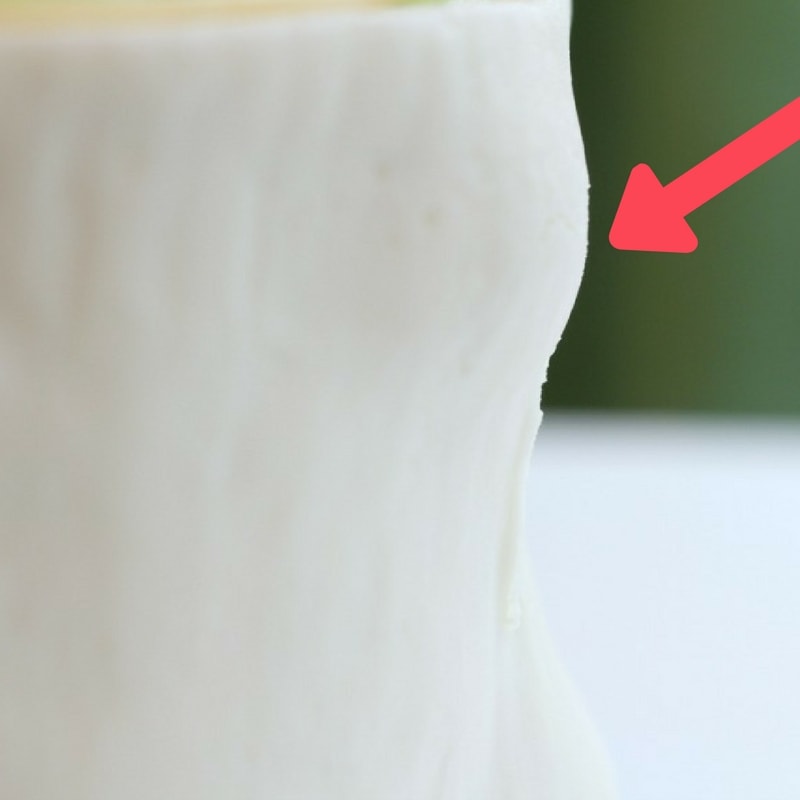
See that big ‘ol bubble there close to the top? Reminds me of that old Alien movie where the alien is trying to bust out of their stomachs. Okay, that’s gross and it’s not an alien exploding out of your cake, but it might as well be, because it’s really screwing up the whole look of your cake, right?
How to Avoid It:
These air pockets, in my experience, form because of moisture. Now you want your cake moist, of course, so you don’t want to be making a dry cake, just because you don’t want any blowouts. That’s not the fix here. The issue is when moisture gets trapped between the cake and the buttercream. The fix? Well, I’ve found when you chill your cake completely and then ice it, it traps condensation between your cake and your buttercream.
So in the first problem we talked about (the crumbling cake) I mentioned to chill it for a bit. The trick is if you do chill it, chill it for the minimum amount of time you can get a way with. Now, if you’re using a perishable icing or buttercream, you won’t have much choice and you’ll have to keep it chilled fully.
I’ve found the problem occurs when it’s been chilled or kept in the fridge, then brought out to serve and it sits on the table for awhile. That’s when the blow-out occurs. Usually what happens is you decorate your cake, take tons of time smoothing the buttercream and getting it perfect, then you come back the next day to take it to the event and BAM! a huge blow out on the side.
I know what I’m saying is a little controversial and a lot of people disagree and love to decorate and keep their cakes chilled. Do what works best for you, but for me, it has always caused blowouts. It doesn’t hurt to try something new though, if you’re having trouble with those pesky air pockets.
Another thing to note is you want to make sure your cake layers are leveled, that the tops are flat and that the cake has had time to settle…which we’ll talk about below.
Cake Decorating Problem #3:
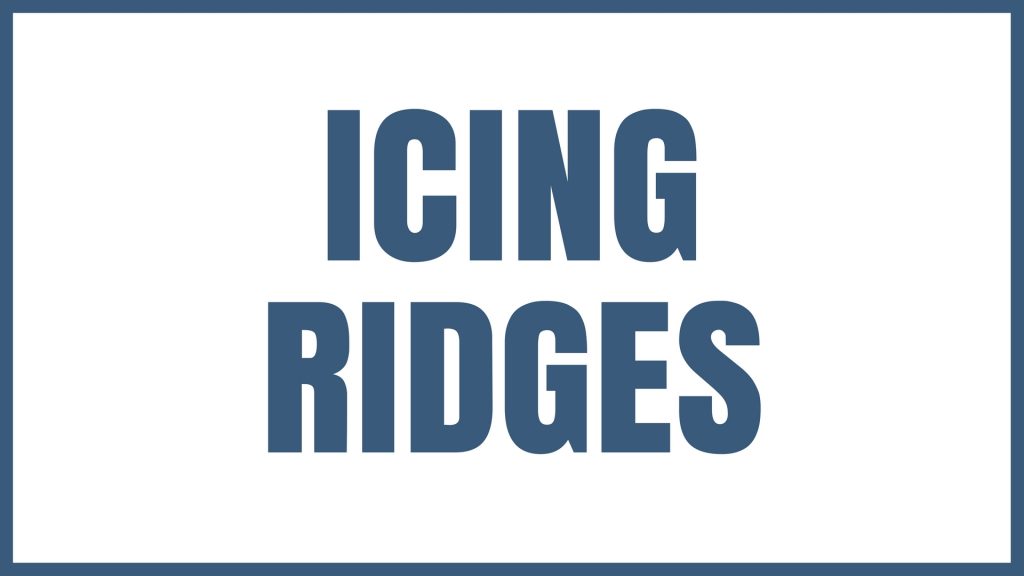
Icing Ridges Around the Cake
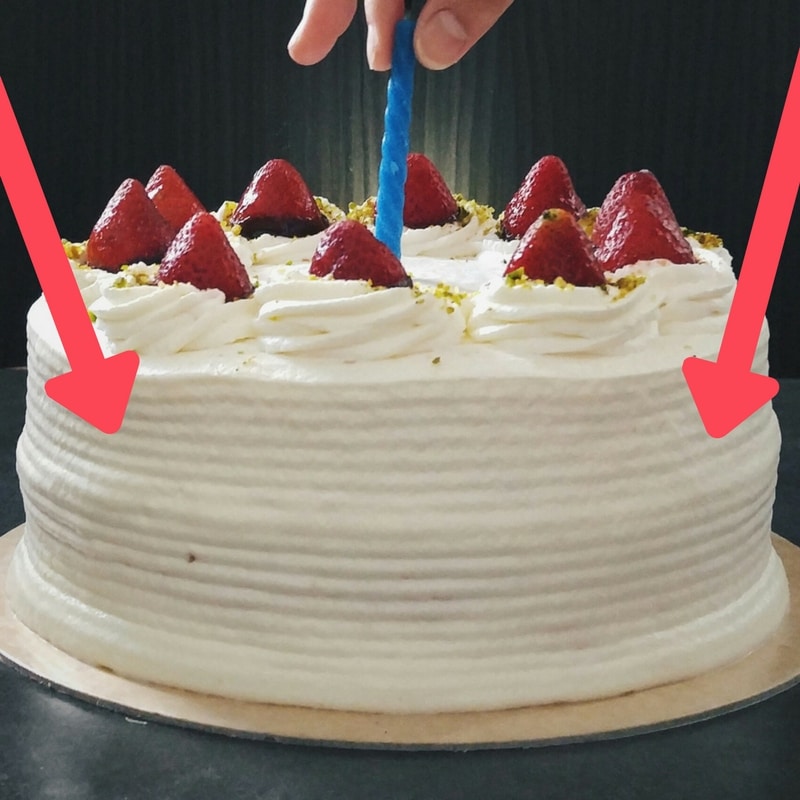
Ok, this is a pic I got off of Canva. It’s a beautifully taken picture, but this cake has settled and it’s caused an icing ridge around the middle and around the bottom. This icing ridge around the middle is caused by the filling squishing out once the cake has settled, or it’s come to room temperature.
This can happen for several reasons. It’s easy to over fill between the layers of cake. Your icing could be a little thin as well. But I’ve got some tips…
How to Avoid It:
Some people like to use what they call an icing dam. I personally have not had much luck with this method, but some people do. If you want to try it, you’ll just take a bit of icing, thicken it up with some confectioners sugar (if you’re using American Buttercream) and pipe a line around the cake layer. Next you’ll just fill in with your regular buttercream, then stack your cake layer on top. This hasn’t completely stopped the ridges for me, so I tend to do something a little different, but it takes a little more time.
What I like to do is layer my cakes like normal (I don’t normally use a dam), but I’m very careful not to over-fill between the layers. I’ll then add a thin layer of buttercream (like a crumb coat) over the entire cake. I loosely cover it with saran wrap or press-n-seal wrap and let it ‘settle’.
I don’t chill my cakes because that firms everything up and I want the cake to settle before I do all the decorating. Let it settle for at least an hour minimum…several hours is better, over night is even better. Once it’s settled, go back and scrape off any excess that has squeezed out of the sides. Then you can go ahead and coat the whole cake with buttercream and continue decorating. This is what works best for me.
Cake Decorating Problem #4:
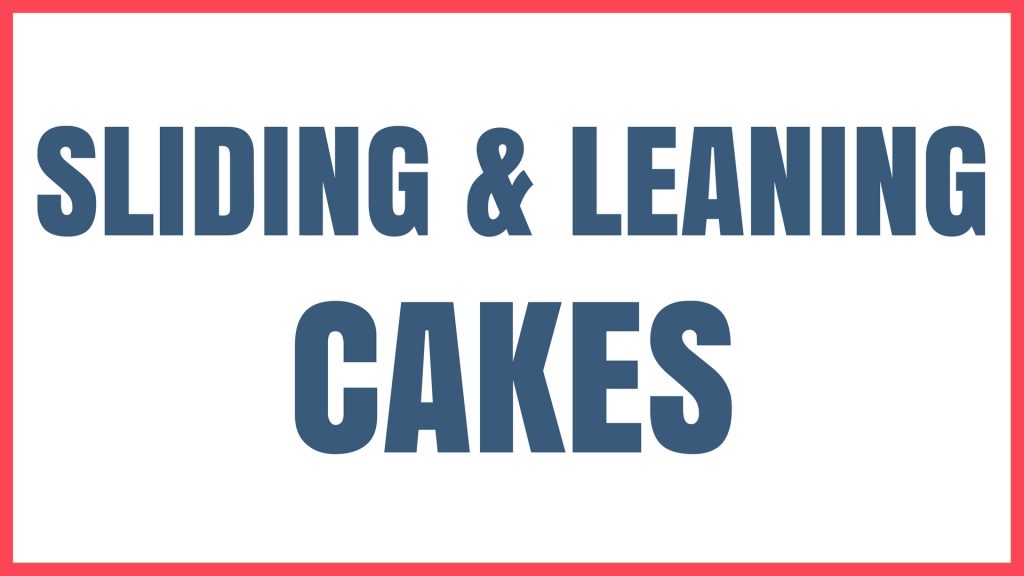
Sliding Cake Layers and Leaning Cakes
Ok, I don’t have a picture of a leaning or sliding cake, but I’m sure you catch my drift, right?
How to Avoid It:
There are a couple of things that can cause this.
The cake layers need to be leveled. You either want to take a long knife or you can use a cake leveler.
You want each cake layer to be completely flat. This will also help prevent bulges in your buttercream as well. Uneven cake layers will cause all kinds of problems and the whole cake could even move on you while you’re trying to ice it.
Also make sure your buttercream isn’t too thin. This one is probably fairly obvious, but if your buttercream isn’t thick enough, your cake layers are going to slide around on you.
Cake Decorating Problem #4:
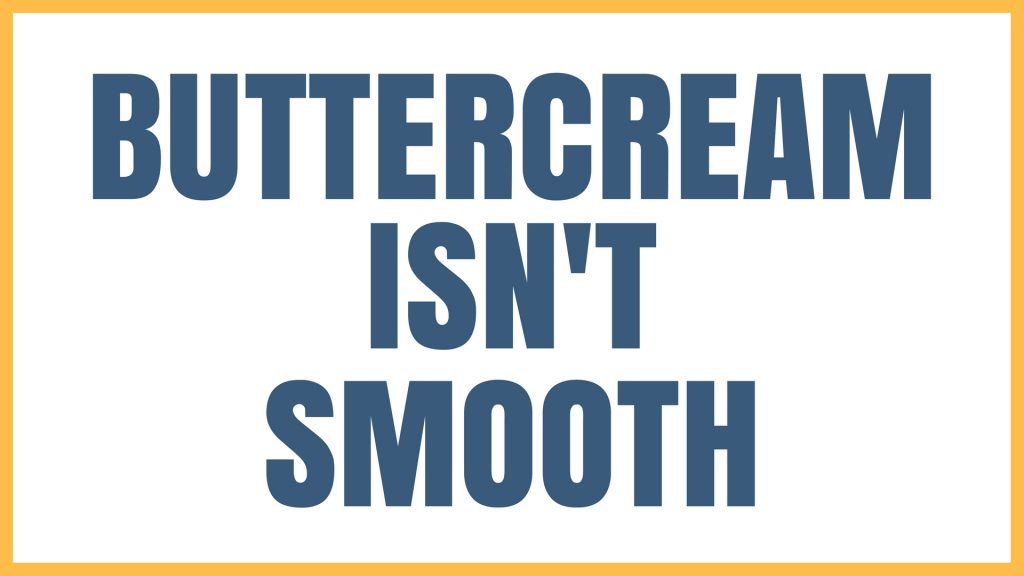
You can’t get your buttercream smooth
Since smoothing buttercream seems to be a huge issue plus the fact that I’ve got a ton of tips to help with that, I wrote an entire blog post about it. You can find that here: How to Get Smooth Buttercream
Ok, there you have it! Common Cake Decorating Problems and How to Avoid Them. I hope these were helpful to you and if you think of any other problems you encounter, leave me a comment and let me know. I’d love to help!
If you’d like a free printable reference guide for this post, you can download it below:
You might also want to check out these other blog posts for some additional tips:
Inexpensive Supplies You Need to Start Decorating Cakes
25 Insanely Useful Tips for Baking Cakes
PIN IT HERE!–>



madhavi
Thanks for publishing this blog, really awesome. Only experienced professional can do this.
Kara Jane
Thanks so much for the compliment! 🙂
Liset
Hi, really nice blog, thanks
I’m having a hard time getting the right buttercream consistency ,last night i placed the cake in the fridge,then in the morning 10 min in the freezer , and started crumb coating, the buttercream was falling off the sides of the cake, i used half butter half regular shortening, please help!!!!
Kara Jane
Hi there, I normally don’t chill my cakes before frosting them. It causes condensation and the buttercream just doesn’t stick to it as easily. Some people do still chill their cakes and you’ll have to if you’re using a perishable filling, but for decorating purposes it’s always caused me problems. I have an entire post about why I don’t chill them and what I do instead if you want to check it out. Here’s the link: https://iscreamforbuttercream.com/should-i-refrigerate-my-cake-before-decorating/
You may also want to make sure that your buttercream isn’t too stiff. Super stiff buttercream will fall right off of a cake. I hope this helps!
Mandy
How do I stop my buttercream/ ganache from sweating when it comes out of the fridge
Thank you
Kara
Hi Mandy, that’s condensation and when you remove the cake from the fridge (a low humidity environment) to warm or room temp (which usually has a higher humidity) then it’ll condensate. You can try to cover the cake in a cake dome, a cake box that’s wrapped, or something that prevents the outside air from getting to it. So, it might help to keep it covered in the fridge and when you take it out until it’s ready to serve. If it’s going from the cold fridge to a VERY warm environment, that’s going to cause quite a bit of condensation and there may not be anything that could really prevent that from happening when it’s extreme temperature variations. So, for now I’d try boxing the cake, then wrapping that box with plastic wrap and chilling it. Once you take it out, leave it in the box until you think it’s about at room temp, then remove the plastic wrap and the box. See if that helps at all.
Xiomara
Can I refrigerate the cakes after I have allowed it to settle and have fully decorated it?
Kara Jane
Yes you can
Pooja Urjoon
Hello thanks a lot, you have beautifully explained it. I’ve noticed that after frosting my cake when i remove it from the fridge, it start to melt. why is it so? and also what is perishable buttercream?
Kara Jane
Hi there, I’m not sure why the frosting would melt after taking it out of the fridge unless the room it’s in is very warm. It could be that the icing you’re using is a very thin consistency though and it slides off once it comes to room temperature. It also could be that condensation forms when you bring something from a cold environment to a warm environment, so you might be seeing that on your cake…it’ll look like moisture on the cake.
And perishable means that it will spoil if not kept chilled. So if you have a buttercream that has sour cream in it, or cream cheese, or egg whites, or a fruit filling etc…things like that have to be kept in the fridge so they don’t spoil.
Sharron Burke
Hi, when smoothing buttercream on my cake it seems to take too much and then goes down to the crumb coat, after taking so long I notice the crumbs coming through to the last layer of icing, why is the icing smoother taking so much of the icing off and still can’t get it smooth, what am I doing wrong and how to get even layer of icing on cake.
Thanks Sharron
Kara
Hi Sharron, you might need to add more buttercream around the cake, and then when you go to smooth it, just don’t push the smoother in too far. Just try to smooth it little by little. Sometimes I even trim some of my cake off if it’s sticking out too far from the bottom cake board and that helps as well.
I do have something called the Cake Blueprint. I actually have an easy method to smooth buttercream on cakes using two cake boards and trimming the cake. The blueprint comes with printables, recipes, and a video to watch how to do it. I’ll put a link below. If you’re interested, just use the code HALFOFF to get it for half off. Here’s the link: https://www.etsy.com/listing/1096454559/the-cake-blueprint-ebook-and-video-cake
Even if you’re not interested in that, try the tips above by adding a bit more buttercream and not pressing the smoother in quite so much, and see if that helps.